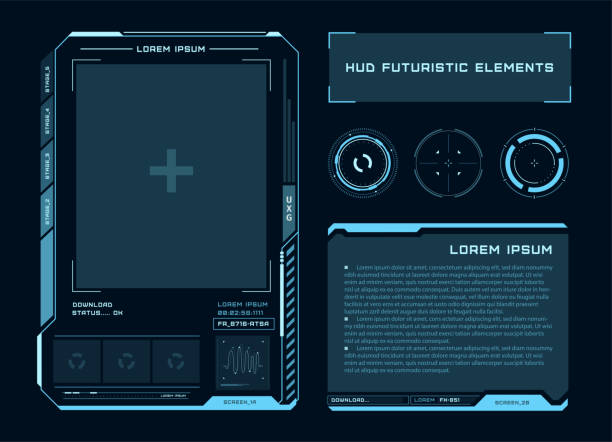Game design is much more than just creating fun experiences—it’s a complex art and science that shapes how players perceive, interact with, and enjoy the virtual worlds we create. Whether you're an aspiring game developer, a curious gamer, or someone fascinated by what makes games compelling, understanding the core principles of game design is essential. In this post, we'll explore these principles, specifically focusing on mechanics, dynamics, aesthetics, level design, and user experience, all of which contribute to unforgettable gaming moments.
What is Game Design?
Game design is the process of crafting games through the development of rules, narratives, environments, and interactions that shape gameplay. Unlike programming or art creation, design centers around the player’s journey and experience, creating meaningful challenges and rewards. It’s a blend of creativity and psychology designed to engage users emotionally and intellectually.
The MDA Framework: Mechanics, Dynamics, and Aesthetics
A central framework in game design theory is the MDA model, which stands for Mechanics, Dynamics, and Aesthetics. These are interlinked layers that help designers conceptualize how a game functions and feels.
Mechanics: The Foundation of Gameplay
Game mechanics constitute the rules and systems governing player actions and interactions. These are the building blocks—for example, character movement, scoring, shooting, or resource management. Mechanics define how the game world operates from a functional standpoint.
Good mechanics must be clear, consistent, and balanced. For instance, in a platformer, mechanics like jumping height, speed, and collision boxes must feel precise. Mechanics that are too complex or unintuitive can frustrate players, while overly simplistic mechanics might bore them.
Dynamics: The Emergent Behavior
Dynamics emerge as the result of mechanics interacting with player inputs over time. They describe the behavior patterns and strategies that come out during the actual play experience. For example, a stealth game’s dynamics might include sneaking, hiding, or drawing enemy attention.
Dynamic systems can evolve unexpectedly, offering players multiple ways to solve problems or unique challenges in each session. This variety enhances replayability and engagement by making each play through feel fresh.
Aesthetics: The Emotional Experience
Aesthetics refer to the emotional responses the game evokes. This includes the narrative, visual style, sound design, and overall mood. Aesthetics engage players on an emotional level, giving meaning to their actions and the game world.
Common aesthetic goals include challenge, fantasy, curiosity, narrative, competition, and discovery. Well-crafted aesthetics draw players into the story and keep them invested beyond gameplay mechanics alone.
The Importance of Level Design
Level design is the art of creating environments and scenarios that challenge, guide, or entertain the player. It bridges mechanics and dynamics with the actual game world layout and pacing.
Crafting Engaging Spaces
A great level excites exploration while balancing obstacles and rewards. Designers create landmarks, hide secrets, and subtly direct player movement using lighting, color, and geometry. Levels serve as a playground for mechanics and dynamics to unfold naturally.
Balancing Challenge and Flow
Effective level design carefully calibrates difficulty to maintain player flow—a state where players feel challenged but not overwhelmed. It introduces new concepts gradually and provides safe zones for recovery, ensuring a smooth learning curve.
Levels also support pacing by alternating intense and calm moments, keeping gameplay engaging without player fatigue.
Enhancing User Experience (UX) in Game Design
User experience focuses on how players perceive control, feedback, and accessibility during gameplay. A positive UX ensures the game is intuitive, responsive, and enjoyable regardless of skill level.
Intuitive Controls and Feedback
Controls should feel natural and responsive, so players can execute actions effortlessly. Immediate feedback—through sounds, visual effects, or haptic responses—confirms player inputs and outcomes, making interaction satisfying.
Accessibility and Inclusivity
Designing for accessibility ensures games can be enjoyed by diverse audiences with various abilities. This includes customizable controls, subtitles, colorblind modes, and adjustable difficulty. Inclusive design broadens the player base and enriches the community.
Tutorials and Onboarding
Clear tutorials and progressive onboarding empower players to learn mechanics at a comfortable pace without frustration. Integrating learning into gameplay, rather than lengthy manuals, helps retain engagement.
How These Principles Work Together
Successful games harmoniously blend mechanics, dynamics, aesthetics, level design, and UX to create memorable experiences. For example, the simple mechanics of a puzzle game can lead to rich dynamics through emergent solutions. Combined with an immersive aesthetic and thoughtfully designed levels, the game captivates players emotionally and intellectually.
Neglecting anyone area can weaken the whole experience. So, designers must iterate continually, gathering player feedback, tweaking systems, and enhancing immersion.
Practical Tips for Aspiring Game Designers
- Prototype Early and Often: Build simple versions of your mechanics to test dynamics quickly.
- Playtest with Diverse Players: Gain insights into user experience and unexpected behavior.
- Focus on Player Motivation: Understand what drives your audience—challenge, story, competition—and design accordingly.
- Iterate Based on Feedback: Use data and observations to refine mechanics, level design, and aesthetics.
- Study Great Games: Analyze classic titles to see how they balance these principles.
Conclusion
Game design is a multifaceted craft that combines logical systems with creative expression to produce engaging, enjoyable experiences. By mastering the core principles of mechanics, dynamics, aesthetics, level design, and user experience, designers can create worlds that players love to explore and revisit.
Whether you’re building your own game or simply want to appreciate the intricate artistry behind your favorite titles, understanding these foundational ideas strengthens your appreciation and skill. Keep experimenting, learning, and designing—the best games are yet to come!



